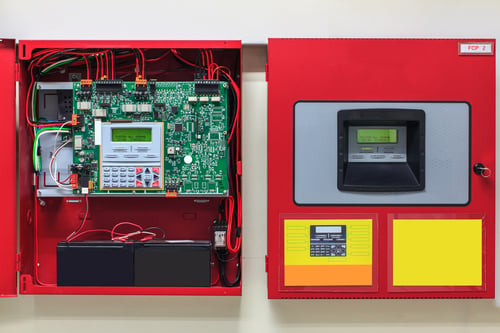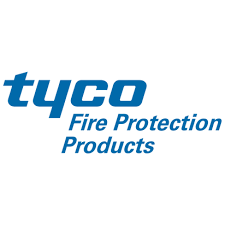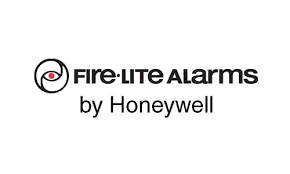 A fire alarm control panel (FACP), fire alarm control unit (FACU), fire indicator panel (FIP), or simply fire alarm panel is the controlling component of a fire alarm system. The panel receives information from devices designed to detect and report fires, monitors their operational integrity and provides for automatic control of equipment, and transmission of information necessary to prepare the facility for fire based on a predetermined sequence. The panel may also supply electrical energy to operate any associated initiating device, notification appliance, control, transmitter, or relay. There are four basic types of panels: coded panels, conventional panels, addressable panels, and multiplex systems.
A fire alarm control panel (FACP), fire alarm control unit (FACU), fire indicator panel (FIP), or simply fire alarm panel is the controlling component of a fire alarm system. The panel receives information from devices designed to detect and report fires, monitors their operational integrity and provides for automatic control of equipment, and transmission of information necessary to prepare the facility for fire based on a predetermined sequence. The panel may also supply electrical energy to operate any associated initiating device, notification appliance, control, transmitter, or relay. There are four basic types of panels: coded panels, conventional panels, addressable panels, and multiplex systems.

Coded panels were the earliest type of central fire alarm control, and were made during the 1800s to the 1970s. A coded panel is similar in many ways to a modern conventional panel (described below), except each zone was connected to its own code wheel ( i.e. An alarm in zone 1 would sound code 1-2-4 [through the bells or horns in the building], while zone 2 would sound 1-2-5), which, depending on the way the panel was set up, would either do sets of four rounds of code until the initiating pull station was reset (similar to a coded pull station) or run continuously until the panel itself was reset. Large panels could take up an entire wall in a mechanical room, with dozens of code wheels. Lists of codes had to be maintained, sometimes with copies posted above pull stations (this setup is commonly seen in older wings of hospitals). Smaller panels could be set up in one of two ways. Most of the time, the panel would only have one zone, and therefore, only one code. Common one-zone codes were 4-4-0 and 17-0-0 (which is similar to the 120 bpm March Time setting used on later panels, which has in turn been replaced with an interrupted four count uniform temporal code 3 pattern used since 1996). Alternatively, the panel could be made with no code wheels, using only what was called the gong relay. Normally, this would be used in a system with coded pull stations to re-transmit the coding strikes from the pulls. However, it could also be used as its own zone, with the connected horns or bells sounding continuously instead of in a particular code. These panels are not common today, but can sometimes be found in older buildings such as those on college campuses or hospitals.
Today, there are two types of fire panels :
- Conventional fire alarm panel.
- Addressable fire alarm panel.
Conventional
 Conventional panels have been around ever since electronics became small enough to make them viable. Conventional panels are used less frequently in large buildings than in the past, but are not uncommon on smaller projects such as small schools, stores, restaurants, and apartments.
Conventional panels have been around ever since electronics became small enough to make them viable. Conventional panels are used less frequently in large buildings than in the past, but are not uncommon on smaller projects such as small schools, stores, restaurants, and apartments.
A conventional fire alarm control panel employs one or more circuits, connected to initiating devices (usually smoke detectors, heat detectors, duct detectors, manual pull stations, and sometimes flame detectors) wired in parallel. These sensors are devised to dramatically decrease the circuit resistance when the environmental influence on any sensor exceeds a predetermined threshold. In a conventional fire alarm system, the information density is limited to the number of such circuits used.
To facilitate location and control of fire within a building, the structure is subdivided into definite areas or zones. Floors of a multistory building are one type of zone boundary.
An Initiating Device Circuit (known as a Signaling Line Circuit (SLC) in addressable systems) connected to multiple devices within the same “zone” of protection, effectively provides 3 bits of information about the zone to the panel; normal, trouble, and alarm. The state of each initiating device circuit within a zone displays at the fire alarm control panel using visible indications, such as a flashing LED/light or an LCD display.
The panel may employ a graphical representation of the zone boundaries on a floor plan (zone map) using textual descriptions, illuminated icons, illuminated sections, or illuminated points on the map corresponding to initiating circuits connected to the fire alarm control panel. Annunciators that do this are called graphic annunciators.
Larger systems and increasing demand for finer diagnostic detail beyond broad area location and control functions expanded the control by zone strategy of conventional systems by providing multiple initiating circuits within a common zone, each exclusively connected to a particular type of initiating device, or group of devices. This arrangement forms a device type by zone matrix whose information is particularly suited to the Tabular annunciator In multi store buildings employing a Tabular annunciator, for example; rows of indicators define the floors horizontally in their stacked relationship and the type of device installed on that floor displays as columns of indicators vertically aligned through each floor. The intersection of the floor and device indicators provides the combined information. The density of information however remains a function of the number of circuits employed.
Even larger systems and demands for finer diagnostic and location detail led to the introduction of addressable fire alarm systems, with each addressable device providing specific information about its state while sharing a common communication circuit. Annunciation and location strategies for the most part remain relatively unchanged.

Multiplex systems
Multiplex systems, a sort of transition between conventional and modern addressable systems, were often used in large buildings and complexes from the mid to late 1970s into the late 1980s. Early on, these systems were programmed to function as large conventional systems. Gradually, later installations began to feature components and features of modern addressable systems. These systems were often capable of controlling more than a building’s fire alarm system (i.e. HVAC, security, electronic door locks…) without any type of alarm or trouble condition present. While the main panel was the brains of the system and could be used to access certain functions, fire alarm controls were usually accessed through transponders. These were smaller conventional panels programmed to ‘communicate’ the status of part of the system to the main panel and also could be used to access basic fire alarm control functions.
 Fire alarm control panel (FACP), fire alarm control unit (FACU), or fire panel, these appliances choreograph the activities of countless life-saving appliances to facilitate safe evacuation and swift emergency response during a fire. In this article, we’ll take a look at how a fire alarm control panel features in a complete fire alarm system, what’s required by the International Building Code (IBC) and the National Fire Protection Association (NFPA), and what these standards mean for choosing a fire panel.
Fire alarm control panel (FACP), fire alarm control unit (FACU), or fire panel, these appliances choreograph the activities of countless life-saving appliances to facilitate safe evacuation and swift emergency response during a fire. In this article, we’ll take a look at how a fire alarm control panel features in a complete fire alarm system, what’s required by the International Building Code (IBC) and the National Fire Protection Association (NFPA), and what these standards mean for choosing a fire panel.
- NFPA codes and standards, including the NFPA Fire Code and hundreds of standards that relate to fire protection and fire extinguishing systems including sprinkler systems, smoke control systems, fire hoses, and tests relating to fire.
The NFPA Fire Code
While the NFPA does not have the power to police or enforce compliance of its Fire Code or standards, these codes and standards are used throughout the U.S. to determine compliance of the fire safety requirements of many regulations. For example, the NYC Building Code 2014 specifically requires compliance with NFPA standards for:
- Automatic sprinklers
- Standpipes
- Fire pumps
- Fire alarm systems
Also, where NFPA codes and standards use the word “shall” to indicate requirements, this generally implies reference to mandatory requirements by other codes or standards that have been adopted into law.
Apart from straightforward legal issues, the Fire Code, which is reviewed and amended every three years, provides for life safety by providing requirements that will reduce the probability of injury and death as a result of fire, explosions, or any other events that involve hazardous materials.
Further, the Code aims to provide an environment for occupants and members of the public who may be near to a building or facility that is “reasonably safe” from fire and similar emergencies. It also aims to protect emergency responders and fire fighters.
Elements defined in the 2018 edition of the NFPA 1 Fire Code, that are relevant to high rise fire alarm system design, include:
- Alarm which indicates the existence of a “condition” that calls for an immediate response – as in raise the alarm!
- Design specifications that embody building characteristics and other conditions that are controlled by the design team usually representing the client, architect, pertinent engineers, and possibly other designers.
- Detectorsthat have sensors which respond to certain physical stimuli including gas, heat, or smoke. More specifically, automatic fire detectors are designed to detect a “fire signature” that creates changes in the atmosphere and initiates action because of flames, gas, heat, smoke, and so on.
- Fire alarm signals that result from automatic or manual detection of fire alarm conditions.
- Fire alarm systems that consist of circuits and components that are arranged to monitor and reveal the status of various fire alarms and signal-initiating devices and, in this way, initiate an appropriate response.
- Fire hydrants used to supply hoses and fire department pumpers with water. These are valved connections on water supply systems that have one or more outlets.
- Fire protection systems that comprise any fire alarm device or system, or fire-extinguishing device or system, or a combination of these, that is designed and installed so that it will detect, control, or extinguish a fire or alert occupants of the building and/or the fire department so they know a fire has occurred.
- Fire retardants that are in a liquid, gas, or solid form and are used to inhibit combustion when used with combustible materials.
- High-rise building which indicates that the floor of a story that may be occupied is greater than 75 feet (23 meters) above the lowest level of the fire department vehicle access.
- Manual fire alarm boxes and pull stations that are used to initiate fire alarm signals.
These definitions are all in keeping with those listed in the NYC Building Code 2014 which is, of course, legally enforceable.


































